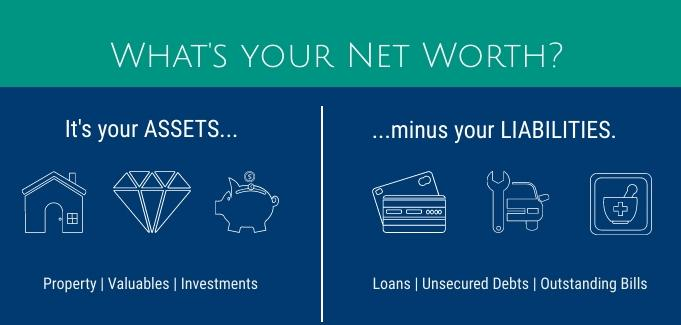A Quick Guide: How to Calculate Your Tangible Net Worth?
Jan 08, 2024 By Susan Kelly
Introduction
How to calculate your tangible net worth? Your net worth is the value of your assets, less your liabilities. If you have more assets than debts, your net worth is positive. However, if your liabilities exceed your assets, your net worth will be negative. This simple method of determining net worth may not always be suitable. Because of this, you may want to calculate your true wealth. This accurately reflects your wealth and does not include any guesswork or projections.
It's possible, though, that this simplistic approach to determining wealth won't cut it in certain contexts. This is your entire tangible assets minus your total tangible liabilities. Tangible net worth is used by businesses as a proxy for their "liquidation value" in the event of a sudden shutdown and sale. When the lender requires a "genuine" net worth figure, individuals looking for personal or small company loans may also find this number helpful.
When Referring To Wealth, What Exactly Do We Mean When We Talk About "Tangible Net Worth?"
While both net and tangible net worth take stock of an individual's assets and debts, the latter delves into more detail. It assigns a monetary value to everything you own. This number is critical for businesses since it represents a physical representation of their net worth. When determining their sale or liquidation value, businesses look at their tangible net worth. It is also useful for those applying for small business or personal loans from financial institutions which insist on seeing a "genuine" net worth number before making a decision. Your lender may care about your tangible net worth if you default on their loan since it gives a more precise picture of your financial situation and how much the lender could collect from selling your assets.

Tangible Versus Intangible Assets
Calculations of the net and tangible net worth differ because the former considers all assets while the latter excludes intangible assets. Your assets consist of anything you own that has monetary value. Cash, land, and any permanent constructions, such as a house, tied to the land are all considered assets in this sense (everything else that you own, such as cars, boats, furniture, and jewellery). Since you can physically handle these items, we call them your "tangible assets."
But intangible assets are those that cannot be physically touched. Unlike tangible assets, such as a building or inventory, intangible assets exist in mind rather than in the physical world. However, while calculating tangible net worth as part of the loan procedure, the bank may only take into account tangible assets due to their ease of liquidation.
What Are Tangible Assets?
Assets that can't be sold directly for cash are subtracted from the total tangible assets. Consequently, only items that can be physically exchanged for money are considered tangible assets. Therefore, tangible assets include jewellery, vehicles, boats, houses, rental revenue, land, buildings, real estate, money, etc. Unlike the other types of assets, investments are classified as financial assets rather than physical ones. This is because the investments only have a limited liquidity window before they must be sold.
There is no way to convert the intangible assets into cold hard dollars. That's a lot of money for something I can't see or touch, but it's worth every penny. Borrowers frequently argue that their intangible assets should be considered when determining whether or not to grant a loan. Still, they often settle for less favourable terms from banks and other lenders. Intellectual property, trademarks, patents, copyrights, goodwill, etc., are all examples of intangible assets.

Valuation of Intangible Assets
Intangible assets are difficult to put a price on. What may happen to organizations that rely significantly on intangible assets is demonstrated by the emergence and fall of many dot-com companies in the late 1990s and early 2000s. The market capitalization of Ask Jeeves Inc., whose common stock traded at roughly $180 per share in late 1999, was nearly 200 times stockholders' equity then. The market value was approximately $4 billion, but the company's books only showed assets of $32 million (mainly cash, cash equivalents, and investments). Ask Jeeves' intangible assets were valued differently by investors, as seen by the gap between the balance sheet and the indicated market value. Intangible assets were overvalued at $100 million, but 18 months later, Ask Jeeves stock sold for only approximately $1, indicating a much lower market worth of $50 million.
Conclusion
Total debts owed by an individual are subtracted from their tangible assets (those that can be physically held or converted to cash) to determine their tangible net worth. If and when a company decides to sell itself, it will utilize its tangible net worth to gauge its true market value. Lenders may consider a borrower's liquid assets before making a loan decision. When total assets are subtracted from total liabilities and intangible assets, the result is the tangible net worth.







